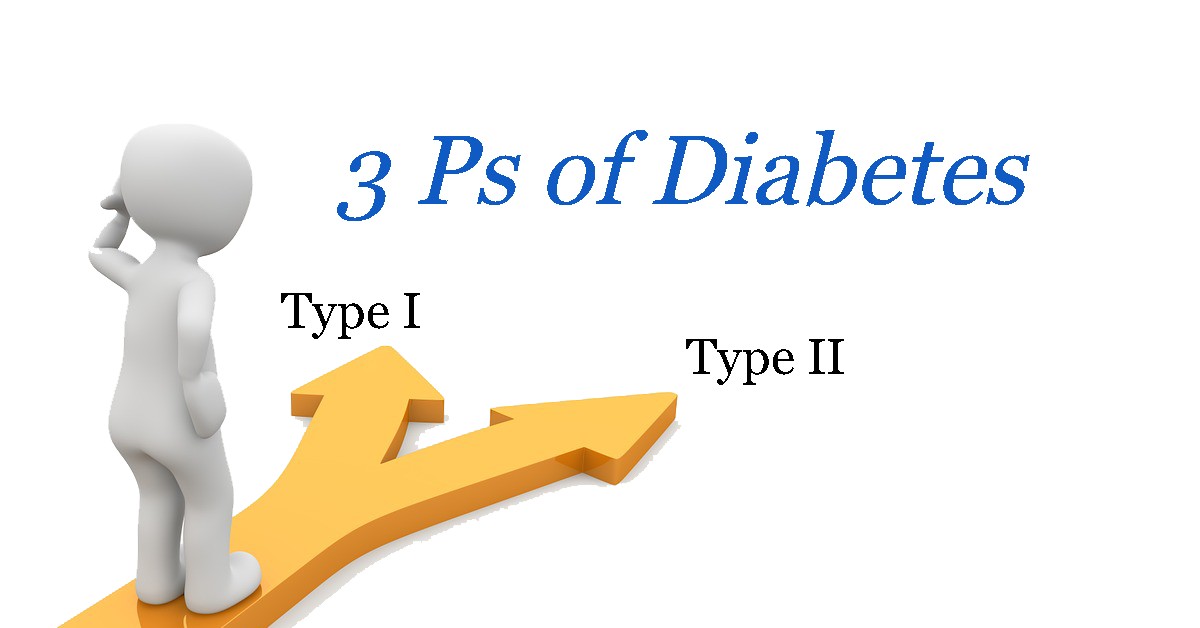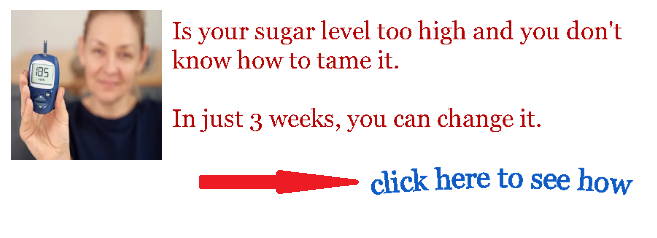The 2020 national diabetes report shows that at least 10.5% (34.2 million people) of the U.S. population suffers from diabetes. That’s a significant number that raises concern for the welfare of diabetics. Health experts have yet to identify an absolute cure for diabetes, meaning that patients must live with the condition. Diabetic patients manage to live productive lives when they change their lifestyle after diagnosis. However, the quality of life a patient lives depends on how early the treatment begins.
It might take a prolonged period before a diabetic patient becomes ill and visit a doctor. Diabetic patients on social platforms like Reddit and Quora often inquire about the initial signs and symptoms shown. An example of such inquiries is on this link, whereby a Reddit user is anxious about a scheduled doctor’s visit. The user, in this case, says that he has never worried about diabetes but has some worrying symptoms. The 3 Ps of diabetes help identify the classical signs and symptoms of the condition.
The 3 Ps of diabetes includes polyuria, polydipsia, and polyphagia.
Polyuria
Polyuria is the first P in the 3 Ps of diabetes. Polyuria is among the common signs of diabetes, which refers to excessive urination. A healthy person produces between 1 and 2 liters of urine daily. An individual with polyuria urinates more than 3 liters of urine a day. Frequent urination is a medical concern since, if it is left untreated, it causes dehydration. On the other hand, dehydration can affect kidney functioning if left untreated. Polyuria is a major symptom of both Types I and Type II diabetes. High blood sugar levels force the body to excrete excess glucose by urinating.
Polyuria can result from diabetes insipidus, a rare disorder inhibiting the body from controlling fluid levels. An individual feels very thirsty even after drinking a lot of fluids like water and coffee. Diabetes insipidus has no link with diabetes mellitus. People suffering from neurological conditions do not secrete arginine vasopressin (AVP). AVP acts as an antidiuretic hormone. The lack of AVP hormones makes it challenging for the kidneys to control the required amounts of body fluid.
Diuretic medications can cause polyuria since their function is to increase urination. Diuretic medications help in treating high blood pressure and congestive heart failure. While the drugs help in treating other conditions, it is essential to administer the correct dosage for individual patients. Examples of such medications include lithium, tetracycline, and calcium channel blockers. Patients experiencing polyuria should consult with their doctors to review the dose.
Since polyuria is a symptom, not a condition, it lacks an actual diagnosis. Doctors focus on identifying the cause of the condition. Some aspects considered include identifying whether it occurred suddenly or gradually. Polyuria not only emerges from diabetes but can also be due to neurological conditions or medications. Doctors conduct a urine blood sugar test where they verify whether the body is eliminating glucose through urination. Positive test results show that the patient suffers from either Type I or Type II diabetes. The treatment for polyuria depends on the underlying cause; in some cases, doctors prescribe diuretic drugs.
Polydipsia
Polydipsia is among the 3 Ps of diabetes where patients experience excessive thirst. No amount of water seems to be enough when quenching a polydipsia thirst. Water is essential for the body because it enhances dehydration. However, drinking too much water negatively impacts an individual’s health. A polydipsia patient will likely experience excessive urination depending on the water intake.
Too much water disrupts the chemical balance in a person’s body. The body excretes excess water in the body through urination. If an individual drinks too much water for the body to dilute, it dilutes the blood. Diluted blood means that the amount of sodium in the body significantly reduces, leading to a condition known as hyponatremia. At this point, the excess water in the body can damage some internal organs and bones. Diabetic patients experiencing polydipsia are likely to experience other symptoms such as headache, cramps, seizures, slurred speech, confusion, and nausea. In extreme cases, polydipsia can lead diabetes patients to a coma or death.
Diabetes Type I and Type II are the leading causes of polydipsia. People with diabetes have high blood sugar levels, compels them to pee frequently. Frequent urination dehydrates the body, causing excessive thirst. Diabetes insipidus also contribute to polydipsia because the kidney cannot control the amount of water needed by the kidneys to function normally. Mental illnesses such as mood disorders, anorexia, and Schizophrenia cause polydipsia. Mental health patients lack control over the amount of water they should drink, which can be life-threatening.
The most common symptom of polydipsia is excessive thirstiness even after drinking some water. An individual might also experience some extreme dryness in the mouth. Patients with polydipsia also pass large amounts of urine in a day. Other symptoms of polydipsia include exhaustion, abnormal hunger, blurred vision, weight loss, sores, and infections.
It is easy to confuse extreme thirst with polydipsia. Health experts advise individuals only to become concerned when extreme thirst continues after a few days. One should also ensure that the extreme thirst is consistent and does not vary based on activities that one partakes in. Doctors conduct a blood test to ascertain whether one suffers from polydipsia. A fluid deprivation test can also help doctors assess whether the extreme is a source of concern for the patient. When polydipsia relates to diabetes, doctors prescribe some drugs to regulate blood sugar. Doctors also recommend cognitive behavioral therapy to alter the condition’s cause is mental health.
Polyphagia
Another component of the 3 Ps of diabetes is polyphagia, a term used to describe extreme hunger. It is normal for human beings to experience an increased appetite in situations such as participating in intense physical activities. However, excessive hunger can be a symptom of an underlying illness. Other factors unrelated to diabetes mellitus, like stress, can also be a source of excessive hunger. Healthcare givers argue that polyphagia hunger cannot elapse after consuming food. The desire to eat will remain constant. Diabetics should not eat too much food when the blood sugar level is high since it escalates the condition.
Excess hunger results from the inability of the body to convert food into energy. During the initial stages of diabetes, blood sugar levels are high since the patient has no control over the illness. Insulin resistance or lack makes it impossible for blood glucose to enter body cells. The diabetes signs and symptoms are likely to escalate as one eats more food to satisfy the hunger. Individuals might also experience excessive hunger due to hypoglycemia, where the body lacks adequate glucose. Individuals experiencing hunger due to low blood sugar levels should consider consuming something sugary such as sweet. Besides the increased risk of diabetes, eating too much food exposes an individual to other lifestyle diseases such as obesity.
An individual suffering from polyphagia shows other symptoms, including headache, blurred vision, frequent urination, dehydration, and fatigue. Failure to address polyphagia leads to more severe conditions like ketoacidosis. The life-threatening condition occurs when the liver begins to break down fats at a fast rate to form ketones. Ketoacidosis makes the blood of a diabetes patient acidic, which is common among Type I diabetics.
Diabetes coaching experts explain that the 3 Ps of diabetes occur collectively in this video (https://youtu.be/jgX9_RrfvbY). Thus, patients experiencing excessive urination also have extreme thirst and hunger. Patients with Type I diabetes are likely to exhibit the signs and symptoms earlier than those with Type II. The 3 Ps of diabetes are clear indicators that the blood sugar levels are higher than required. Doctors use the three factors to diagnose one with diabetes before conducting a blood test.
Individuals exhibiting the 3 Ps of diabetes show common symptoms, including blurred vision, fatigue, numb hands and feet, and recurring infections. Patients experiencing any of the 3 Ps of diabetes can use laboratory tests to ascertain whether they have diabetes. Doctors use various laboratory tests to test whether one is diabetic, including an A1C blood test, urine test, oral glucose test, fasting test, and random glucose test. Doctors recommend that patients consult with their healthcare givers before taking any medication after showing diabetes symptoms. It is important to note that other health conditions are likely to have symptoms similar to the 3 Ps of diabetes.
The medical management of the 3 Ps of diabetes recommends that patients should control their blood sugar levels. Diabetic patients can control blood sugar levels by making healthy lifestyle changes. The affected individuals should liaise with nutritionists to create a healthy meal plan. Another recommendation is that people with diabetes should increase the number of physical exercises they undertake. Those already diagnosed with diabetes should adhere to the insulin prescription to minimize the symptoms. It is recommendable that individuals who are experiencing the 3 Ps of diabetes consistently monitor their blood sugar levels. Such practices will help prevent any severe and life-threatening complications associated with the 3 Ps of diabetes.
I hope that you realized that food carries direct impact on our blood condition. If you are interested to see how food affects our blood condition as well as glucose level. You can watch Natural Blood Thinners post or visit Hematic Food youtube channel



